


Container Tree Planting Practices
Update: This article is currently being revised with new text and photography. While the information on planting box grown desert trees is essentially correct, current horticultural thinking discourages the use of tree stakes in both nursery production and tree planting.
Revised November 2016
Alternative Planting Methods for Desert Trees. For decades desert horticulture professionals have begun evaluating the methods used for planting trees. Questions have been raised about the size, shape and depth of the planting hole, the usefulness of organic amendments, staking and the value of post-transplant pruning. In recent years, the introduction of large plastic containers (#25, #45 and larger) into commercial wholesale tree productions has required further refinements to planting details.
The traditional planting method requires a hole dug slightly larger and deeper than the dimensions of the box/container size being planted. The short comings of this method include: 1. trees may sink lower than desired exposing trunks to soil-borne diseases; 2. excavation of planted trees has shown that this method does not have the effect of promoting deep rooting; 3. deep holes create a very poor interface between the root-ball/back-fill and the existing soil; 4. availability of oxygen in root zone may be limited.
Several years ago, Dr. Jimmy Tipton (formerly with the Department of Plant Science at the University of Arizona) came up with some recommendations that landscape professionals should consider when drawing planting details or planting trees. These recommendations are based on the fact that the majority of active tree roots are found within two feet of the soil surface.
This alternative method of planting recommends excavate a planting hole that is rough and uneven on the sides and bottom with the hole slightly shallower than the depth of the rootball (2 to 4”) and three to five times as wide as the root-ball. This method promotes a better interface between back-fill and existing soil, and improves lateral root development. Not all planting locations can accommodate this alternative planting method. For example, trees planted along narrow street medians. In those instances a long narrow planting hole is suggested, to help encourage lateral root growth. Another alternative for planting trees in compacted or heavy clay soils, is to excavate three to five times the width of the box but only half for the depth of the root-ball. Un-compacted topsoil is then mounded around the rest of the root-ball to create a rooting area with half of the soil actually above the original soil line. This method has limited applications in commercial and municipal plantings but could be effective in residential landscapes.
Water the excavated planting hole prior to setting the tree into the hole. This serves three purposes: 1. hydrates the planting hole lessening the chance of the dry native soil wicking moisture from the tree rootball and potentially damaging them; 2. helps settle and compact the disturbed soil giving a firm foundation for the rootball; 3. Identifies soil percolation rate for tree watering schedule (duration and interval).
Back-fill should NOT be amended with organic matter. Organic amendments in the back-fill tend to restrict lateral root spread, slowing water penetration within the rootball and surrounding, undisturbed soil and can result in reduced top growth. Where heavy clay soils are encountered, sand can be added to the back-fill to increase its porosity, the rate of water penetration, improve drainage and encourage new root growth into native/undisturbed soil.
The development of new roots is stimulated by and dependent upon root pruning (to encourage new roots) and the growth of leaves and stems (to provide the energy from photosynthesis for the process). The practice of pruning trees following planting reduces the stem and leaf growth and can actually delay establishment. Such pruning is considered unnecessary and potentially detrimental to the tree. Dr. Tipton’s alternative planting methods offer the possibility of improving tree planting practices for the benefit of all trees; however, time and experience will be needed to determine if these methods can be efficient and economical when used in commercial landscape design and construction.
Planting #25 and #45 container trees:
Set the tree beside the oversized (see above) planting hole. Lay the rootball/container on its side and slice the entire circumference of the bottom of the container and remove it (Photo 1 and 2). Root prune ¼- ½” off the bottom of rootball (Photo 3 and 4). Carefully, slide the tree into the planting hole (Photo 5), supporting the trunk and the rootball (this will require more than one person). Set tree upright. Slice one side of the container from bottom to top and remove container from planting hole (Photo 6 and 7). The planting hole needs to be of sufficient diameter to accommodate the removal of the sizes of the container. Root prune ¼ to ½” off the sides of rootball and backfill with native soil as described above (Photo 8 and 9). Eliminate air pockets while backfilling by adding water and tamping in backfill using a shovel handle (Photo 10 and 11). This will insure that the roots are not water stressed or damaged by contact with dry soil.

Figure 1

Figure 2

Figure 3
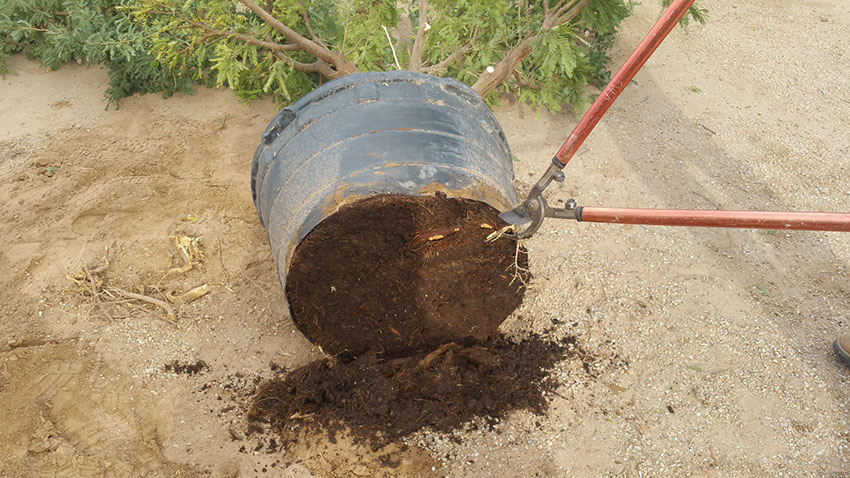
Figure 4

Figure 5

Figure 6

Figure 7
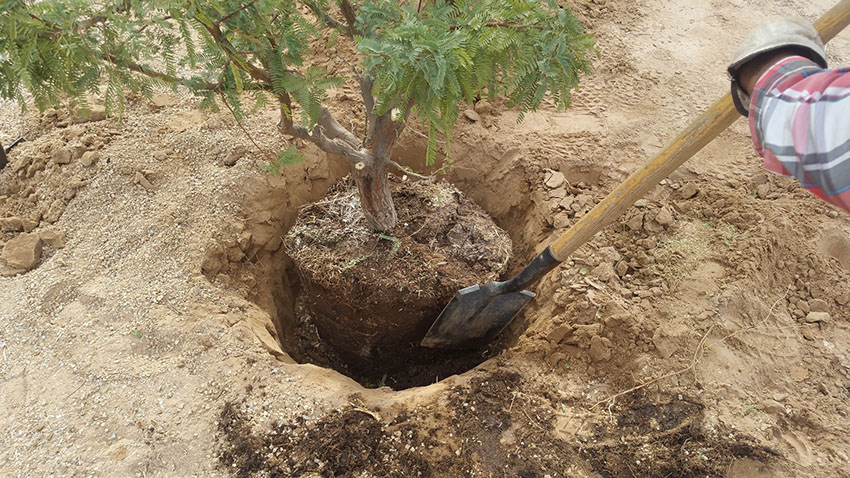
Figure 8
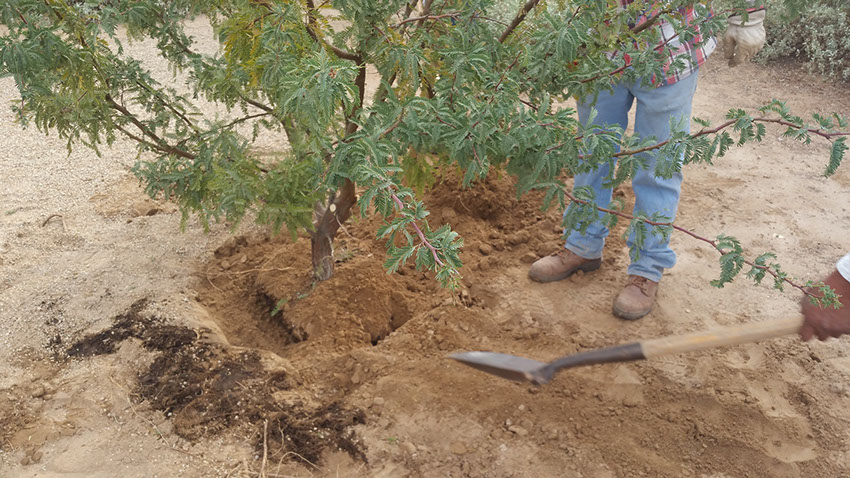
Figure 9
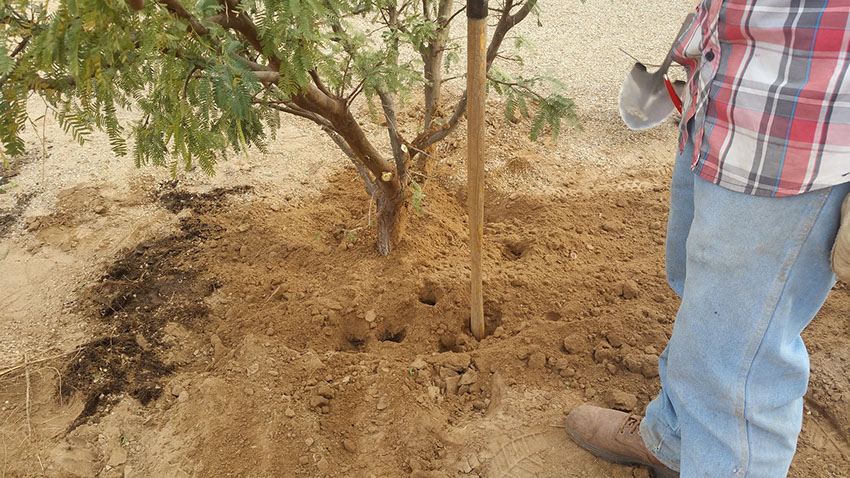
Figure 10
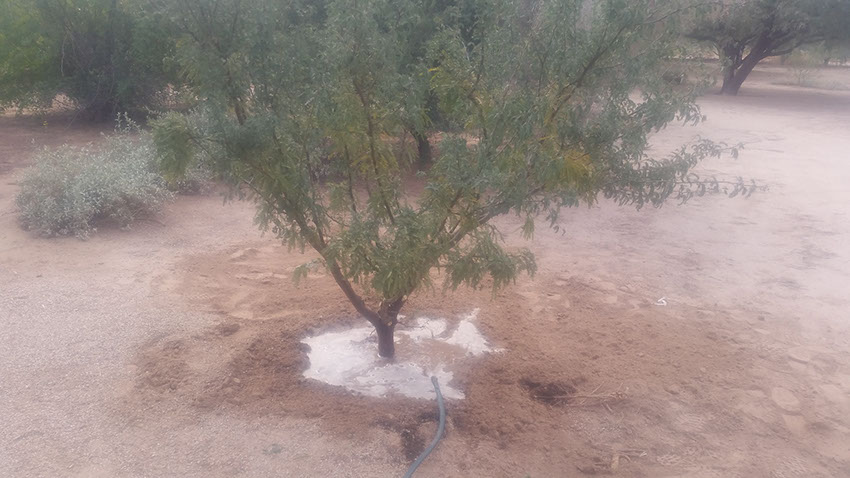
Figure 11
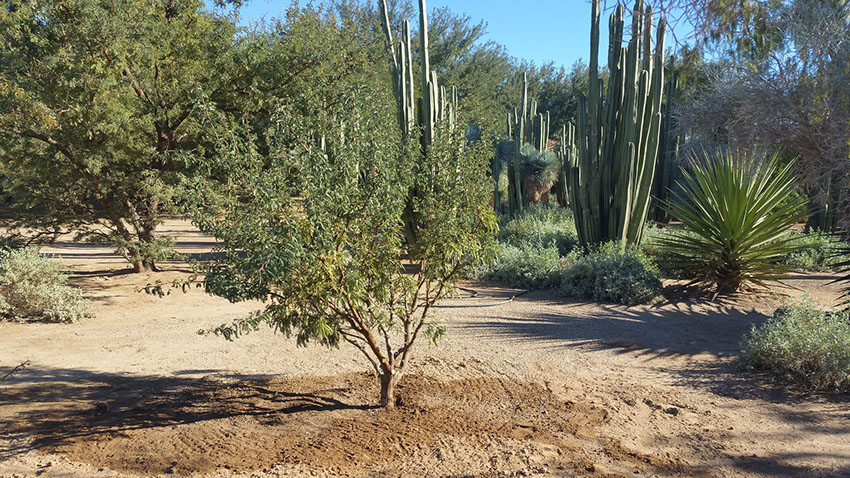
Figure 12
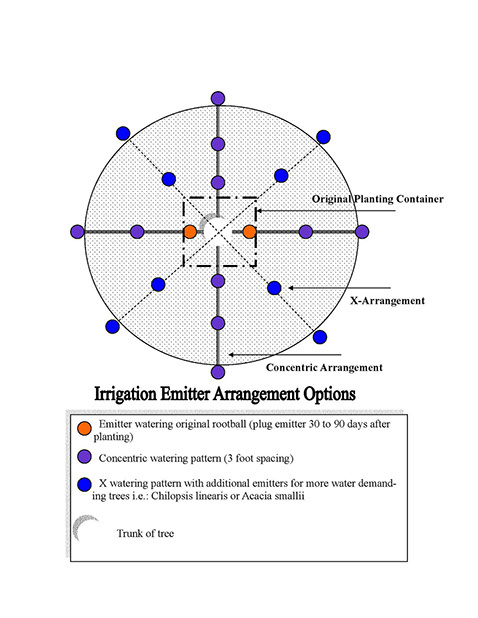

© Copyright 2000-2020 Arid Zone Trees